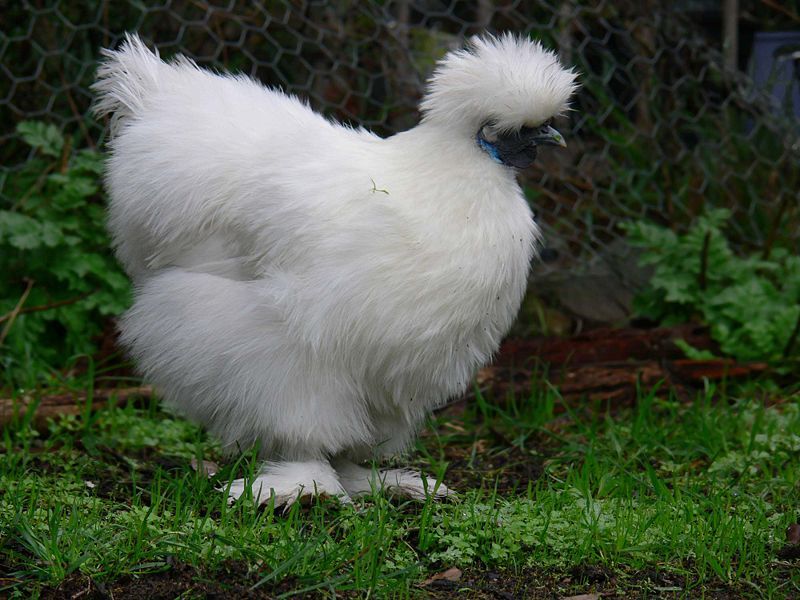

Thanks to the fluffy feathers it can be harder to sex silkies when they’re young. My grandfather loved telling me a story about his little silkie hen that hatched ducklings, apparently, she was a great mom and just about lost her mind the first time they jumped in a puddle! Silkie Roosters vs Silkie Hens Keep in mind that they stop laying when they’re broody so if you have a particularly broody hen you’ll have even fewer eggs.

Silkies lay small cream or tinted eggs and you can expect 100-160 eggs per year. They are such eager mamas that they are often used to hatch eggs from other birds. The hens are also sweet and are known for going broody. Unlike a lot of super cute animals that would gladly rip you to shreds, with silkies the cute teddy bear exterior matches their cute teddy bear interior. The hole can close or get smaller as the birds grow which offers more protection to the brain but it doesn’t always. They’re most at risk when they’re small, so it’s best to keep them with other small chicks in the brooder and make sure they have a lot of room. I highly recommend reading this article on the Causes & Treatment of Wry Neck in Chickens from Pipinchick Silkies. I have raised many silkies over the years and I’ve only had one case of wry neck in a chick. Sometimes so severely that the birds head is on the ground.

It is possible for brain damage to result in a condition known as wry neck, where the birds head is twisted to the side.
#Silkie chicken as pet skin
It’s not something you can see (it’s covered by skin & the head pouf of feathers) but it does open them up for potential brain damage. Read more about Appenzeller Spitzhauben, the Best Crested Breedīasically, they have an opening in the top of their skull.

All of the poufed breeds, including Polish Chickens, Appenzeller Spitzhauben, and of course Silkies have what’s called a ‘vaulted skull’. Silkies have feathered feet so as adults you might have to do some searching to find that extra toe but it’s there under the fluff!Īnother trait, and the one that causes them the most issues, is the presence of a head pouf. All Silkies (even the white ones) have black skin and an extra toe. There is a speculation that the breed was brought west through the silk trade, but no one knows for sure.They have two more physical traits that make them impossible to misidentify, even as chicks. No one is exactly sure where Silkie's originated, but Marco Polo did mention black skinned, furry chickens in his travel through Asia during th 13th century. Because they are so docile and good-natured, they sometimes suffer bullying by more aggressive breeds when kept in mixed flocks. A Silkie will hatch just about any other kind of egg and will mother the chicks. While many Silkies are kept as pets, some breeders also keep them because they are exceptionally broody and good mothers. ***Any blue variety ordered from Purely Poultry may include silkie chicks with black, blue, or splash plumage patterns.****. These birds do not have barbicels, which allows their feathers to spread out rather than hold together which looks like fur. Their feathers are described as “soft,” “downy,” and “fur-like”. These fluffy chickens are cute! They have the “aThey don’t fly well, and they don’t mind being confined.


 0 kommentar(er)
0 kommentar(er)
